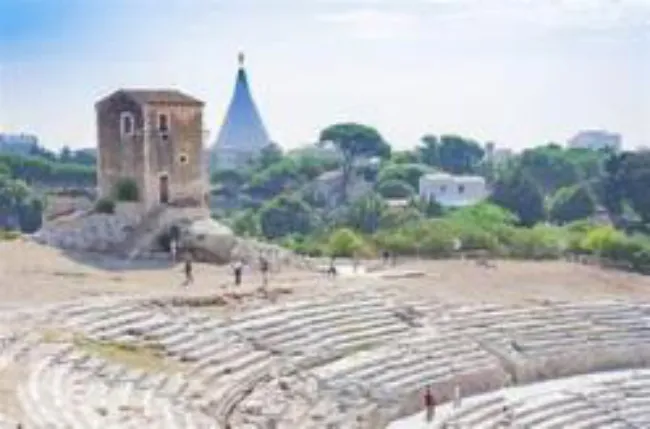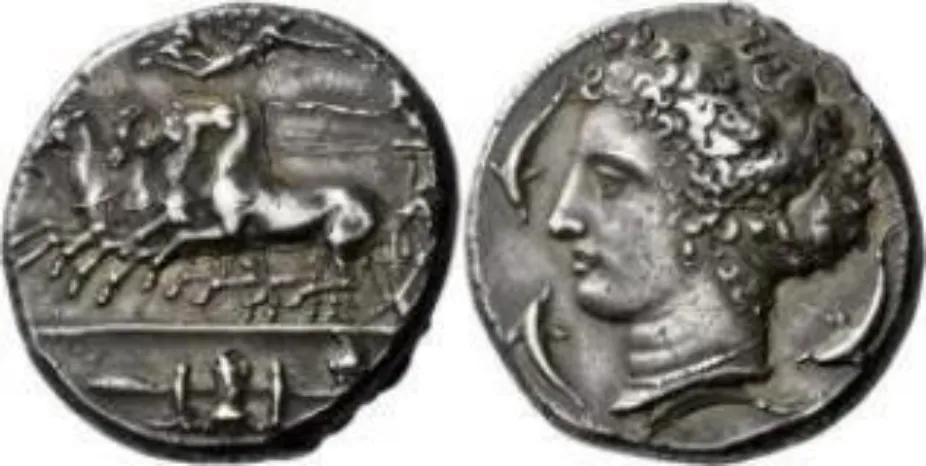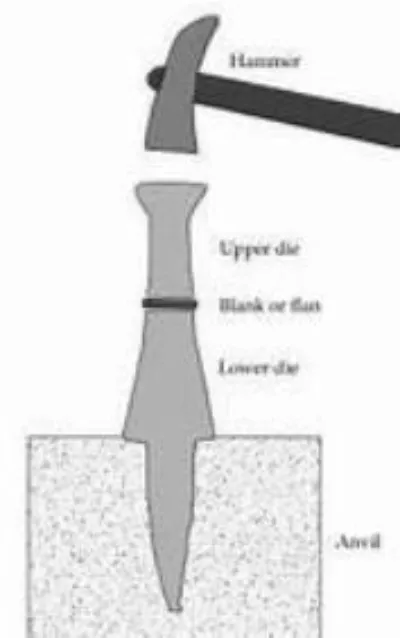Kimon: Currency as Art
By: Jonah Scoles (YN)
Money today is made with Computer Numerically Controlled mills that make the coin dies and machines that strike the coins. But back in ancient times, coin dies had to be engraved by hand. This meant hours hunched over a die creating the works of art. Only the most experienced die engravers were tasked with making the more valuable issues. Kimon is regarded as one of
the most experienced and talented die engravers that ever lived.

(Greek Theatreof Syracuse, ruinsof ancient monument, Sicily,Italy)
Not much is known about Kimon except for the fact that he was probably born in Syracuse around 430 B.C. Kimon was tasked with creating the coin dies for tetradrachm and decadrachm. These where the large silver coins used by Syracuse, Greece, and later Rome and Egypt. Little is known about Kimon’s education. Die engravers didn’t need to be able to read or write. They just needed to be able to copy an image, engrave dies, and stamp the letters in with smaller stamps and a hammer.
The process of engraving dies takes a very steady hand. One slip-up could cost the whole die. What makes Kimon’s work special is the amount of depth that he was able to bring to the piece. Most die engravers were not able to create the details and life that he was able to bring to them.

If you look at the obverse of the coin (the left image), you can see a quadrigas (chariot) with all four horses. What is special about this coin is that you can see almost all the legs of the horses. This was not common for this specific coin variety. Another detail that is not common to see is all the dolphins on the reverse (right image) of the coin. All three of them are intact with very little wear.
Impressively, you can see the smallest details – the joints in the horses’ legs and the curls in Arethusa’s hair. If you look at the headband on Arethusa, you will see the letters KI. This is one of three places on this coin where we can see Kimon’s mark. If you look at the dolphin underneath Arethusa, you will see his complete signature. And if you look at the line underneath the horse (what is called the exergual line) you can see Kimon’s signature in letters only visible with magnification. The process Kimon faced of making the dies that strike the coins was extremely long and time-consuming work. (I should know I have tried it!) The process involves taking a graver and slowly adding more details until it resembles what the artist is trying to make. They are effectively making a negative of the coin, so everything looks backwards which makes it even harder. Then, after they have the basic design engraved onto the die, they stamp
the letters where they need to go. In this coin, that was just Kimon’s signatures. They then go back through with an even smaller graver and add the small details. But before the coins are
struck, the round pieces of metal the coins are made from (planchets) must be made. To make the planchet, molds are made of sand with a piece of wood that has circles the size of the
planchets connected with little channels. Once the mold is made, molten silver in this case, would be poured into it creating the blanks. After being cooled the planchets are then cut off from the rest and wait to be struck.

It’s amazing to consider how much work Kimon, and other artists of his time, put into creating money for their governments. It wasn’t just currency, but beautiful art that continues to tell a story today. Kimon was one of the best die engravers of his time. His works of art are still celebrated by coin nerds (like me) today.